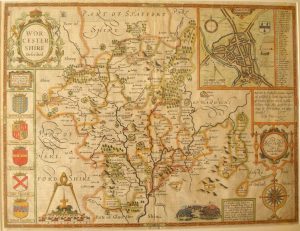A question that has come up several times in conversations with people about eel-rents concerns the value of a stick of eels. The records tell us that X mill owed Y abbey Z sticks of eels per year…but what does that really mean? How much value is the abbey actually getting in their taxes? This is, unsurprisingly, a somewhat difficult question to answer.
There are very few handy charts telling us how much a stick of eels is worth, and it is difficult assessing this type of question from monastery records. Part of the problem comes from the fact that there are often several centuries between records of payment types, meaning that it can be difficult to make assessments of eel equity when rents shifted to currency. This is further complicated by the fact that eels had a specific value to monks that went beyond their more general market worth: since they were not considered flesh, they could be eaten during Lent and during other Church celebratory days that banned meat.
However, there are places where the archive lets us make an educated guess, and so here is a back-of-the-napkin attempt at finding the value in a stick of eels. I am presenting three places where I can make the conversions, and am offering what I believe to be a low-end projection and a high-end projection. I am converting medieval monies into modern currency through the British Archive’s currency converter, which figures exchange rates to 2005 British pounds sterling, going as far back 1270. I am then adjusting for inflation to 2017 pounds, before converting to 2017 US dollars.
Low-End: King Edward I’s regulations
In 1273, at the start of his reign, King Edward I issued a series of price controls for the sales of certain foods within London, including fish. His government issued tables with prices, which held that, “the best eels, a stike, or a quarter of an hundred” should be sold for 2 d. (Noorthouck).
1 stick = 2 d. (1273)
2 d. (1273) = £4.44 (2005) = £6.26 (2017) = $8.25 (2017)
1 stick = $8.25
1 eel = $0.33
In Edward’s London, then, an eel was to cost 33 cents, and a stick of eels could be had for under $10. This was the same cost for a haddock or a mullet, and also what you would pay for 12 herring (Noorthouck). It is half of what you would pay for the best wild goose.
High-End: The Cleeve Prior Mill
In 1233, a mill in Cleeve Prior owed the Worcester Priory a rent of 3 marks and 40 sticks of eels per year. In 1237, the rent was changed to 1 mark per quarter, or four per year (“Parishes: Cleeve Prior”). So we can make the baseline assumption that, at least to the monks of Worcester Priory in 1237, 40 sticks of eels (1000 eels) equaled roughly one mark.
The mark, rather than being a unit of currency in medieval England, was instead a specific sum of money. Post-conquest, that sum was 160 pennies, or 13 s. 4 d. (Macleod, 459).
40 stick = 1 mark (1237)
1 mark (1237) = 13 s. 4 d. (1237)
13 s. 4 d. (1270) = £ 355.15 (2005) = £499.61 (2017) = $659.61 (2017)
1 stick = $16.49
1 eel = $0.66
So…in 1233 the mill at Cleeve Prior paid taxes of about $659.60 in eels annually to the Worcester Priory, and this example points to eels being worth almost exactly double the price that Edward I would try to impose in London some 40 years later.
In the Middle: The Travels of Henry, Earl of Derby
In the late 14th century Henry, the Early of Derby — who would shortly go on to become King Henry IV — fought in Prussia with the Teutonic Knights and then made a pilgrimage to Jerusalem. His treasurer kept receipts and accounts for these expeditions, and those were maintained in the records of the Duchy of Lancaster. Among the accounts are numerous entries for eels, one of the first of which comes on July 8, 1390. The accounts record that: Et per manus Thome Fyssher pro xlviij styks anguillarum ab ipso emptis apud Boston, le styk ad iiij d., minus in toto viij d., xv s. iiij d. (Smith, 20). So, the expedition purchased, from the appropriately named Thomas Fisher, 48 sticks of eels caught in Boston, and paid 4 d. per stick, less a total of 8 d., meaning the entire expense was 15 s. 4 d.
1 stick = 4 d. (1390) = £8.06 (2005) = £11.36 (2017)
1 stick = $14.96
1 eel = $0.60
Henry’s expedition paid Thomas Fisher roughly $688.16 for his 1,200 eels — a figure that sits between the rates of exchange suggested by Edward I and by the Worcester Priory, though closer to the later. Falling as it does between the other two price points, Henry’s eel purchase suggests some value in using them as upper and lower limits.
Conclusions and Takeaways
So what does that get us? It suggests that individually, a single eel translates to $0.33-$0.66, and that a stick of eels equals something between $8.25 and $16.49. I am inclined to think that the value of an eel sat more towards the high end of the scale, given that the Cleeve Prior calculation is fairly close to the price recoded in by Henry IV’s treasurer. There are numerous problems with this type of calculation, not the least of which is that we are trying to assess different types of accounting, at different times and in different settings. However, if we take the two measures as possible high-end and low-end price points, then we have at least gained a window of possible understanding that we didn’t have before. It can, perhaps, help to provide a handle on the value of the large number of eels moving around England in the medieval period.
All well and good, you say, but how does this help us now? What is the purchasing power of a stick of eels? What can my eels buy me today?

For modern context, a year’s payment to attend Cornell University as an undergraduate in 2017-2018 (tuition, room, board, books, fees, et al) comes to $70,321. Without any financial aid, if you were paying only in sticks of eels, the total cost would run you between 4,264 and 8,528 sticks, or 106,612 – 213,024 eels (either of which represents a number of eels that the Cornell Bursar’s Office is ill-prepared to handle).
If that staggering number of eels feels out of range, or less-than-practical, then it might hearten you to know that an Amazon Prime membership, at $99 per year, will cost you only 150-300 eels…a mere 6-12 sticks. This is an eminently manageable sum. In c. 1180, the kitchen of the Abbot of Abingdon was owed 150 eels annually from Haskillus of Swinford, and 300 eels a year from a man named Arnulf (Stevenson, 325). The archive reports no dissatisfaction on the part of either Haskillus or Arnulf with the burden of their rent, but even so…perhaps they would have preferred free 2-day shipping instead?
Citations
British Library, MS Cotton Nero.D.II. fol. 191v
“Cost to Attend 2017-18 | Financial Aid.” Cornell University Financial Aid. Accessed September 10, 2017. http://finaid.cornell.edu/cost-attend.
Macleod, Henry Dunning. A Dictionary of Political Economy: Biographical, Bibliographical, Historical, and Practical. Longman, Green, Longman, Roberts, and Green, 1863.
The National Archives. “Currency Converter.” Accessed September 10, 2017. http://www.nationalarchives.gov.uk/currency
Noorthouck, John. “Book 1, Ch. 4: Edward I to Edward III,” in A New History of London Including Westminster and Southwark (London: R Baldwin, 1773), 57-74. British History Online, accessed April 19, 2017, http://www.british-history.ac.uk/no-series/new-history-london/pp57-74
‘Parishes: Cleeve Prior’, in A History of the County of Worcester: Volume 3 (London, 1913), pp. 308-312. British History Online. Accessed August 11, 2017. http://www.british-history.ac.uk/vch/worcs/vol3/pp308-312
Smith, Lucy Toulmin, ed. Expeditions to Prussia and the Holy Land Made By Henry Earl of Derby (Afterwards King Henry IV) in the Years 1390-1 and 1292-3 Being the Accounts Kept by His Treasurer for Two Years. Burlington: TannerRitchie Publishing and The University of St. Andrews, 2015.
Stevenson, Joseph, ed. Chronicon monasterii de Abingdon. Rolls Series. London: Longman, Green and Company, 1858.


